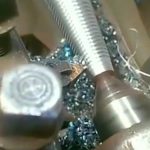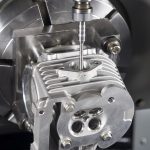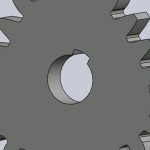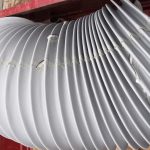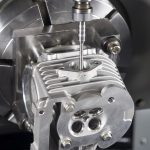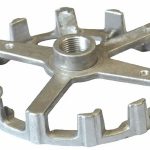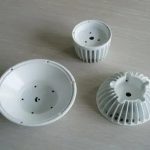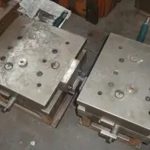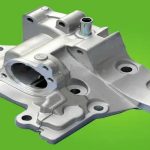1.1 Overview
In 1958, H.F. Shroyer invented the technology of making metal castings with expandable foam plastic models and obtained a patent. The model used at first was made of polystyrene (EPS) board and molded with sand containing binder. The German companies Grunzweig and Harrtmann purchased this patent and developed and applied it. The technology of using binder-free dry sand to produce castings was later patented by T.R.Smith in 1964. Before 1980, the use of the binder-free dry sand process had to be approved by Full mold Process (Inc). After that, the patent was invalid.
The most common and practical method is to put the model coated with refractory material into the sand box, fill the model with dry sand tightly, and pour liquid metal to replace the foam model. This casting process is called: lost foam casting ( EPC), gasification mold casting and solid mold casting, etc. The Lost Foam Casting Committee of the American Foundry Association adopted “lost foam casting” as the name of the process.
Lost foam casting is an innovative casting process that can be used to produce non-ferrous and ferrous metal power system parts, including: cylinder blocks, cylinder heads, crankshafts, gearboxes, intake pipes, exhaust pipes and brake hubs. The process flow of lost foam casting is as follows:
1) Pre-foaming
Model production is the first step of the lost foam casting process. For complex castings such as cylinder heads, several foam models need to be made separately, and then glued into an overall model. Each block model requires a set of molds for production. In addition, a set of molds may be required in the gluing operation to maintain the accurate positioning of each block. The model’s molding process is divided into two steps. The first step is to The polystyrene beads are pre-expanded to an appropriate density, which is generally carried out by rapid heating with steam. This stage is called pre-expansion.
2) Model forming
The pre-expanded beads should be stabilized first, and then sent to the hopper of the molding machine, and fed through the feeding hole. After the mold cavity is filled with the pre-expanded beads, steam is introduced to soften the beads. Expansion, filling all the gaps and bonding into one body, thus completing the manufacturing process of the foam model, this stage is called autoclave molding.
After molding, the mold is cooled by a large flow of water in the water-cooled cavity of the mold, and then the mold is opened to take out the mold. At this time, the temperature of the mold is increased and the strength is low. Therefore, care must be taken during demolding and storage to prevent deformation and damage.
3) Model cluster combination
Before the model is used, it must be stored for an appropriate period of time to make it mature and stable. The typical model storage period is up to 30 days. For a model formed by a uniquely designed mold, it only needs to be stored for 2 hours. After the model is matured and stabilized, it can be divided into two parts. The block models are glued together.
The block model gluing is carried out on an automatic gluing machine using hot melt glue. The joints of the glued surface should be tightly sealed to reduce the possibility of casting defects.
4) Model cluster dip coating
In order to produce more castings per box, sometimes many models are glued into clusters, and the model clusters are immersed in refractory paint, and then dried in an air circulation oven at about 30-60C (86-140F) for 2 to 3 After hours, dry, put the model cluster into the sand box, fill it with dry sand and vibrate tightly. All the internal cavities and outer dry sand of the model cluster must be compacted and supported.
5) Pouring
After the model cluster is firmly filled with dry sand in the sand box, the mold can be poured. After the molten metal is poured into the mold (the casting temperature is about 760C/1400F for cast aluminum, and about 1425C/2600F for cast iron), the model is vaporized. The metal is replaced to form a casting. Figure 1 is a schematic diagram of the sand box and pouring of the lost foam process.
In the lost foam casting process, the pouring speed is more critical than the traditional hollow casting. If the pouring process is interrupted, the sand mold may collapse and cause waste. Therefore, in order to reduce the difference between each pouring, it is best to use an automatic pouring machine.
Figure 1 Schematic diagram of sand box and pouring of lost foam process
6) Falling sand cleaning
After pouring, the casting solidifies and cools in the sand box, and then falls out of sand. The sand falling of the casting is quite simple, and the castings fall out of the loose dry sand when the sandbox is overturned. Subsequently, the castings are automatically separated, cleaned, inspected, and transported away in the casting box.
Dry sand can be reused after cooling, and other additional processes are rarely used. Metal scrap can be remelted and used in production.
1.2 Advantages of lost foam casting process
The lost foam casting process has advantages in three main aspects: technology, economy and environmental protection.
1.2.1 Technical aspects
1) Increased freedom of model design
It is possible for the new process to carry out styling design, and it is entirely possible to add some additional functions to the model from the first stage. For example, the diesel preheater has a special functional part, which can be manufactured by the lost foam casting process instead of the traditional casting method.
2) Eliminate the sand core used in the production of castings
3) Many castings can be fed without the riser
4) Improve casting accuracy
It can obtain a complex shape and structure, and can repeatedly produce high-precision castings with 100% repeatability, and the wall thickness deviation of the castings can be controlled between -0.15~+0.15mm.
5) There is no flash on the joint surface of the model
6) It has the advantage of reducing the weight of castings by about 1/3
7) Reduce machining allowance
The machining allowance can be reduced, and some parts may not even be processed. This greatly reduces the investment in machining and machine tools (for example, the investment can be reduced by half for different situations).
8) Compared with traditional cavity casting, mold investment is reduced.
9) Completely eliminate the traditional process of falling sand and core out
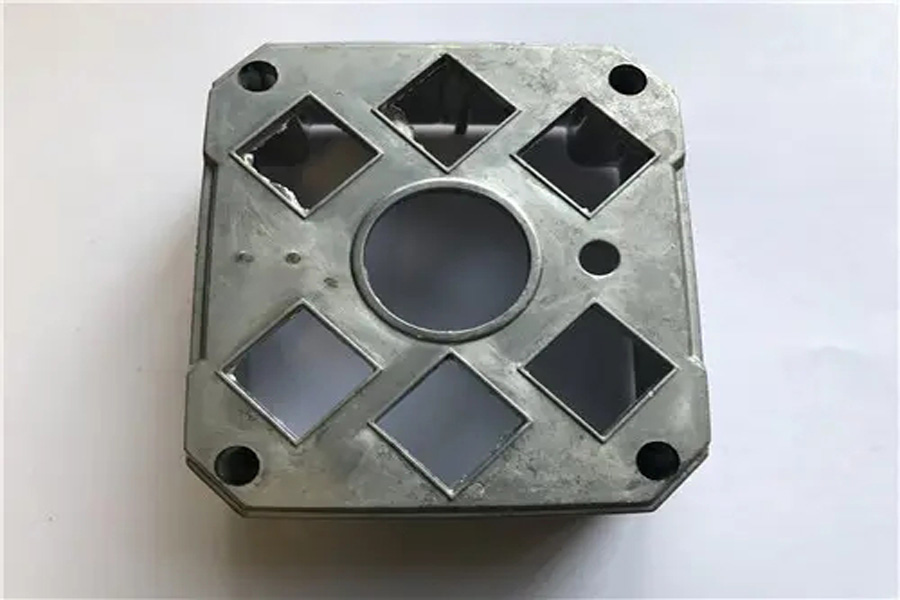
1.2.2 Economic aspects
1) It can produce complex castings as a whole
Adopting the new process design, the block model can be glued to form an overall model and cast into a complex integral part. Compared with the original multiple casting assembly parts (such as diesel preheater), it can benefit from 1 to 10 times.
2) Reduce workshop personnel
To establish a lost foam casting factory, the number of employees is less than that of a traditional casting factory, so this factor should be considered.
3) Flexible casting process
The flexibility of the casting process is very important, because the new process may simultaneously produce a large number of similar or different castings in the flask, and the gating system is therefore very flexible. In short, we can say that each advantage is consistent with economic interests, while also improving working conditions.
1.2.3 Environmental protection
Polystyrene and PMMA produce carbon monoxide, carbon dioxide, water and other hydrocarbon gases when they are burned, and their content is lower than the standards allowed in Europe. Dry sand can use natural silica sand, which is 100% recyclable and does not contain binder. The paint used in the model is composed of a binder and other auxiliary materials added to the water, which does not cause pollution.
Please keep the source and address of this article for reprinting:Lost foam casting
Link to this article:Lost foam casting
Reprint Statement: If there are no special instructions, all articles on this site are original. Please indicate the source for reprinting:Mold Wiki,Thanks!^^

